Filter by
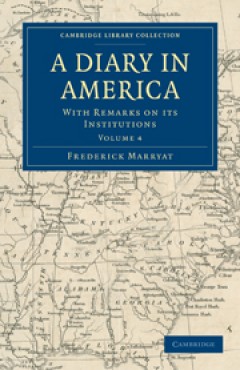
A Diary in America With Remarks on its Institutions
Captain Frederick Marryat (1792–1848) was a distinguished naval officer, today best remembered as a novelist (particularly of stories for children), often drawing on his own experiences. He also edited a radical journal, and wrote non-fiction, including an attack on press-gangs, which damaged his career. He spent 1837 and 1838 travelling in North America, publishing his impressions in this un…
- Edition
- -
- ISBN/ISSN
- 9781139058728
- Collation
- -
- Series Title
- Cambridge Library Collection - North American History
- Call Number
- -
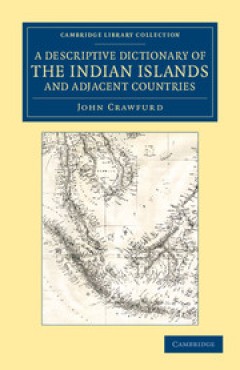
A Descriptive Dictionary of the Indian Islands and Adjacent Countries
Orientalist and colonial administrator John Crawfurd (1783–1868) published this work in 1856. He went to Calcutta as an assistant surgeon in the East India Company, then moved into administration, accompanying political missions to Java, Bali and Celebes, and heading missions to Siam, Vietnam and Burma. Retiring to England in 1828, Crawfurd became a Fellow of the Royal Society and President o…
- Edition
- -
- ISBN/ISSN
- 9781139199070
- Collation
- -
- Series Title
- Cambridge Library Collection - Travel and Exploration in Asia
- Call Number
- -

A Chronological History of North-Eastern Voyages of Discovery: And of the Ear…
Rear-Admiral James Burney (1750–1821), brother of the novelist Fanny Burney and son of the musicologist Dr Charles Burney, is best known for his five-volume compilation of voyages in the Pacific Ocean (also reissued in this series). He began his maritime career at the age of ten, as a captain's servant. Five years later he became a naval officer, and from 1772 to 1780 served on Cook's second …
- Edition
- -
- ISBN/ISSN
- 9781139177566
- Collation
- -
- Series Title
- -
- Call Number
- -

A Brief Narrative of an Unsuccessful Attempt to Reach Repulse Bay: Through Si…
This short work, featuring a number of attractive engravings, traces an abortive expedition to the Canadian Arctic. George Francis Lyon (1795–1832), naval officer and explorer, had accompanied William Parry on a previous expedition in search of the North-West Passage. In 1824 Lyon was instructed to return to Repulse Bay and to explore the mainland. Unfavourable weather conditions forced Lyon …
- Edition
- -
- ISBN/ISSN
- 9781107281202
- Collation
- -
- Series Title
- -
- Call Number
- -
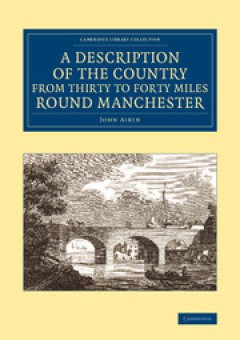
A Description of the Country from Thirty to Forty Miles round Manchester
The late eighteenth century saw Manchester and its surrounding areas undergo significant change as industrialisation fuelled urbanisation and population growth. In this classic 1795 account, the physician and prolific writer John Aikin (1747–1822) gathers together information on the settlements at the heart of manufacturing and trade in north-west England, covering the vital network of waterw…
- Edition
- -
- ISBN/ISSN
- 9781107706101
- Collation
- -
- Series Title
- Cambridge Library Collection - British & Irish History, 17th & 18th Centuries
- Call Number
- -

A Description of Patagonia, and the Adjoining Parts of South America
Thomas Falkner (1707–84), one-time pupil of both Richard Mead and Isaac Newton, was an English Jesuit missionary who lived for nearly forty years in South America until 1767, when he returned to England following the Jesuits' expulsion from Córdoba. Originally published in 1774 in the hope that it 'might be of some public utility, and might also afford some amusement to the curious', this is…
- Edition
- -
- ISBN/ISSN
- 9781139775472
- Collation
- -
- Series Title
- Cambridge Library Collection - Latin American Studies
- Call Number
- -

A Description of British Guiana, Geographical and Statistical
Sir Robert Hermann Schomburgk (1804–1865) was a German-born surveyor and traveller. In 1835–1839 he explored British Guiana for the Royal Geographical Society. In 1840 he was appointed to define its boundaries with Brazil, as Brazilian encroachments were wiping out native tribes. His report to the Colonial Office was published as A Description of British Guiana, Geographical and Statistical…
- Edition
- -
- ISBN/ISSN
- 9780511783586
- Collation
- -
- Series Title
- Cambridge Library Collection - Latin American Studies
- Call Number
- -
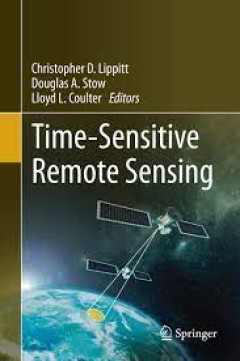
Time-Sensitive Remote Sensing
This book documents the state of the art in the use of remote sensing to address time-sensitive information requirements. Specifically, it brings together a group of authors who are both researchers and practitioners, who work toward or are currently using remote sensing to address time-sensitive information requirements with the goal of advancing the effective use of remote sensing to supply t…
- Edition
- -
- ISBN/ISSN
- 978-1-4939-2602-2
- Collation
- -
- Series Title
- -
- Call Number
- -
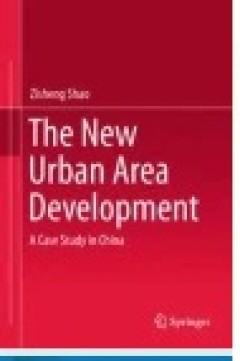
The New Urban Area Development: A Case Study in China
This book examines the formation trajectory and development path of China’s newly formed urban areas, which was the result of an unprecedented massive urbanization process. The analysis is based on the case of Dezhou, Shandong Province. This book systematically introduces strategic studies, planning and design, development and construction, investments, policies and future development of n…
- Edition
- -
- ISBN/ISSN
- 978-3-662-44958-5
- Collation
- XXXV, 417
- Series Title
- -
- Call Number
- -

Vertebrates and Invertebrates of European Cities:Selected Non-Avian Fauna
Vertebrates and Invertebrates of European Cities: Selected Non-Avian Fauna is the first known account of the vertebrate and invertebrate fauna of several cities in Europe and throughout the rest of the world. It excludes birds, which are described in a companion volume. The book contains eleven chapters about nine cities distributed throughout Europe. The chapters start with the history of the …
- Edition
- -
- ISBN/ISSN
- 978-1-4939-1698-6
- Collation
- XX, 700
- Series Title
- -
- Call Number
- -
 Computer Science, Information & General Works
Computer Science, Information & General Works  Philosophy & Psychology
Philosophy & Psychology  Religion
Religion  Social Sciences
Social Sciences  Language
Language  Pure Science
Pure Science  Applied Sciences
Applied Sciences  Art & Recreation
Art & Recreation  Literature
Literature  History & Geography
History & Geography